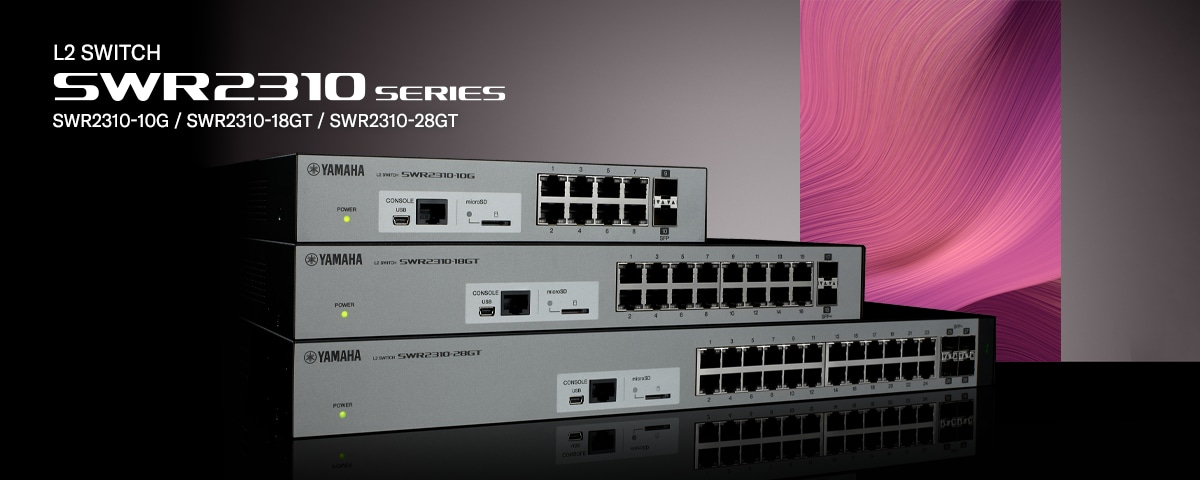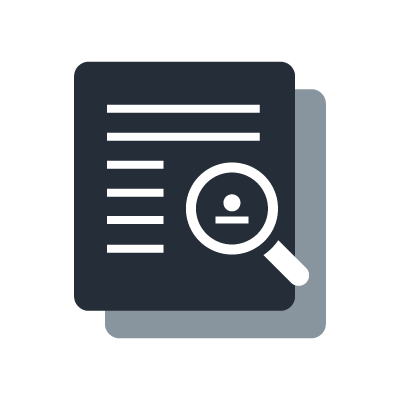SWR2310 Gigabit & 10-Gigabit Dante Switch
Yamaha LAN Monitor
Which switches can be used with this software?
SWP2, SWP1, SWR and SWX series are the main focus for this software. Some other Yamaha switches, router, and wireless AP are also supported, but with limited functionality. Some 3rd party switches will be discovered, but will not be controlled.
How does the software discover the switches in the network?
A Layer 2 protocol is used, without any need to take care of the IP addresses. Just select the correct network interface on your computer, then the switches and Dante devices will be discovered automatically.
Can each switch be given a name for easy recognition?
Yes, they can be named in the “Device Settings” of Yamaha LAN Monitor.
Can the software be used to edit settings in Dante® devices?
No, just monitoring Dante settings such as bandwidth used, latency, and sample-rate. Dante Controller software can be used on the same computer for editing Dante device settings.
Why do some Dante devices have 2 different MAC addresses and register 2 times in the “Connected Devices” list?
Some Dante enabled devices such as Yamaha CL-series, QL-series and R-series register twice in the Connected Devices list of Yamaha LAN Monitor. This is normal behavior, as these devices have 2 MAC addresses: one for the Dante port and one for device management.
MCP1 controllers do not appear in the “Connected Devices” list.
Start Yamaha MTX-MRX Editor software, or send a PING command to MCP1 and press the Update button in the Connected Devices list of Yamaha LAN monitor. MCP1 will be discovered and displayed.
RADIUS server function
What is the RADIUS server function?
RADIUS (Remote Authentication Dial-In User Service) is one of the networking protocols for user authentication. A RADIUS authentication system consists of three elements: a RADIUS server, RADIUS client, and users. A RADIUS client transfers a user's information to a RADIUS server as the client receives a user authentication request to access. In response to the authentication request, a RADIUS server authenticates and decides to allow access by the user. By using the switch's RADIUS server function, an authentication feature can be used without an additional RADIUS server.
What other authentication methods can be used with the RADIUS server function?
Mac authentication, Web authentication, and IEEE802.1X authentication can be used with the RADIUS server function. They can be used together by setting them to each port.
Which port can be connected to use the authentication function?
Any port can be used but make sure to enable the authentication function of a port to be connected to use the authentication function. An authorized device can communicate via the port.
How can a system with multiple switches be configured?
Set all the switches as a RADIUS client and set the RADIUS server functions to one of the switches. Registering device information to be authorized to the server will connect to the server.
Can the RADIUS server function be used with one switch?
Yes. Set the RADIUS server function and the client function.
Which switches support the RADIUS server function?
The following L2 intelligent series switches support the RADIUS server function: SWR2311P-10G, SWR2310, SWP2 and SWX series.







